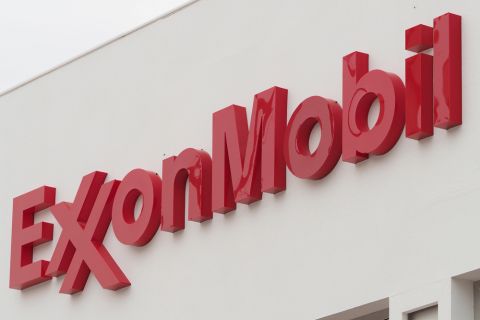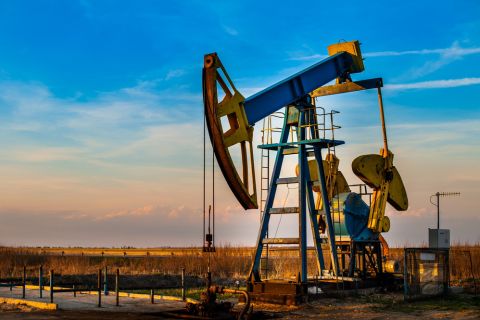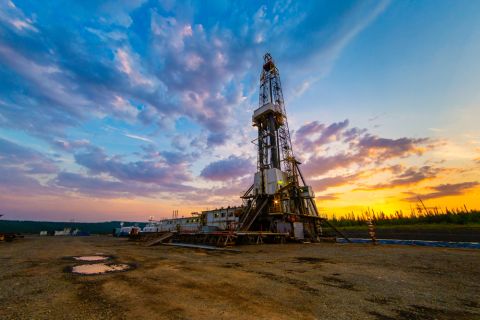Fog, high winds, rough sea states, and other adverse conditions can cause significant delays in the transportation of personnel to offshore installations, with a resultant impact upon costs and efficiency.
With more than 10 million crew transfers taking place annually around the world in the offshore oil and gas sector alone, either by helicopter, vessel, or crane and basket, this is one of the highest risk and most expensive activities in the industry. Transfer methods must be proven, reliable, and capable of handling the changeable conditions that occur in the offshore environment. This means that suppliers must be able to provide solutions that are both safe and technically and economically feasible.
Offshore Solutions BV (OSBV)’s Offshore Access System (OAS) is a cost-effective, practical personnel transfer solution that facilitates safe and efficient access from a vessel to offshore facilities.

Active heave compensation
The OAS is a 21-m (69-ft) hydraulically operated telescopic gangway fitted with an active heave compensation system. With unique continuous 24-hour connection and operating capability, it incorporates a motion reference unit in its active hydraulic system, which when engaged maintains the walkway tip at a constant height relative to the horizon. This allows the gangway to be connected safely to a fixed installation in sea states up to 3 m (10 ft), significant wave height when installed on a suitable vessel.
Once connected, the heave compensation is disengaged, and the gangway is allowed to float between the vessel and the installation. The walkway is robustly connected and automatically compensates for the six movement planes of the vessel motion.
During transfer, the OAS operates a semi-automatic traffic light system allowing personnel to cross from the vessel to the installation safely. From system checks to the deployment of the OAS, the process takes around five minutes, while recovery takes approximately one minute.
With its own independent power source, the OAS can remain operational even in the event of power failure on the vessel. Should an emergency disconnection be required, the OAS has a fail-safe mechanism that allows automatic release from the platform.
It is the only heave-compensated gangway system that can maintain a permanent connection and has an outstanding safety record. Since operations began in 2006, the OAS has achieved more than 157,000 personnel transfers and 8,800 successful connections without any lost time incidents while maintaining an average 96% availability.
Multiple benefits
An OAS-equipped vessel with accommodation in the field means that personnel can be transferred to the installation or FPSO at the start of their 12-hour shift. Several installations can be serviced by one vessel, and with available man-hours on each installation increasing by up to 70% using an OAS as opposed to helicopters, this represents significant cost savings for operators.
An OAS vessel also can prove more cost-effective than a jackup accommodation unit, and with multifunction capability it can be used as a standby vessel to facilitate ROV or dive spread, dive support, workshops, materials storage, and platform supply.
In response to market demand, OSBV recently adapted the system and designed a free-standing skid-mounted unit to reduce installation time to less than 24 hours. This system, which last year completed the world’s first vesselto-FPSO personnel transfer using a heave-compensated gangway, retains all the safety and operational features of the original OAS.
The 80-sq-m (861-sq-ft) Lloyd’s Register-approved unit is fully self-contained and, once installed on an appropriate vessel, is ready for immediate operation.

The system onboard the Bourbon Gulf Star has been used for more than 25,000 personnel transfers in 2012, with more than 60,000 total transfers taking place and no safety incidents recorded.
Permanent connection
One of the key challenges in the offshore environment is extreme, unpredictable weather conditions. In the Middle East region OSBV has seen a rise in activity after first trialing the prototype in Qatar in 2003.
The OAS was first operational in the region in late 2010, and since the success of its first project, OSBV has been providing 24-hour personnel access in the Middle East for Qatar Shell GTL Ltd., operator of the world’s largest gas-to-liquids (GTL) plant, since the completion of sea trials in December 2010. The OAS is the first heave-compensated access system to work in the region and has been used to transfer crews to the Pearl 1 and 2 platforms in the Persian Gulf.
Mounted onboard the Bourbon Gulf Star vessel, the system provides a permanent connection, enabling the operator to optimize 12-hour shift patterns and use the OAS vessel as the primary means of escape.
Despite a challenging environment, the continuous connection capability allowed staff to leave the platform for the vessel during periods of high temperature and humidity, returning to work during cooler periods of the day – a demonstration of the flexibility and efficiency of the OAS.
60,000 transfers for Qatar Shell
The system mounted on the Bourbon Gulf Star has been connected for more than 4,500 hours since operations began, with 100% availability for the past 12 months. More than 60,000 personnel transfers have taken place without any safety incidents (25,000 in 2012 alone). The three-year contract was awarded based on the OAS’ proven technology, safety record, and potential to increase operational efficiency. The OAS delivers considerable time reductions and, as a consequence, operators can manage projects far more efficiently.
Marcel Goedhart, engineering services manager, Qatar Shell GTL, said, “The concept of transferring people from vessel to platform via an OAS was a life-changing decision. Qatar Shell GTL Ltd. will no longer use helicopter transport to transfer people but will have a gangway between platform and ship to make crossings as easy and safe as going from one floor of a building to another.
“In order to operate the systems, we often require connecting the OAS for 24 hours to utilize the vessel as our refuge. With this capability, we have a great solution to moving people around fast, safely, and comfortably.’’
A demonstration of demand from the region, OSBV expects to have four units operational in the Persian Gulf by early next year.
Recommended Reading
Russia Orders Companies to Cut Oil Output to Meet OPEC+ Target
2024-03-25 - Russia plans to gradually ease the export cuts and focus on only reducing output.
BP Starts Oil Production at New Offshore Platform in Azerbaijan
2024-04-16 - Azeri Central East offshore platform is the seventh oil platform installed in the Azeri-Chirag-Gunashli field in the Caspian Sea.
Exxon’s Payara Hits 220,000 bbl/d Ceiling in Just Three Months
2024-02-05 - ExxonMobil Corp.’s third development offshore Guyana in the Stabroek Block — the Payara project— reached its nameplate production capacity of 220,000 bbl/d in January 2024, less than three months after commencing production and ahead of schedule.
What's Affecting Oil Prices This Week? (Feb. 5, 2024)
2024-02-05 - Stratas Advisors says the U.S.’ response (so far) to the recent attack on U.S. troops has been measured without direct confrontation of Iran, which reduces the possibility of oil flows being disrupted.
Tinker Associates CEO on Why US Won’t Lead on Oil, Gas
2024-02-13 - The U.S. will not lead crude oil and natural gas production as the shale curve flattens, Tinker Energy Associates CEO Scott Tinker told Hart Energy on the sidelines of NAPE in Houston.



